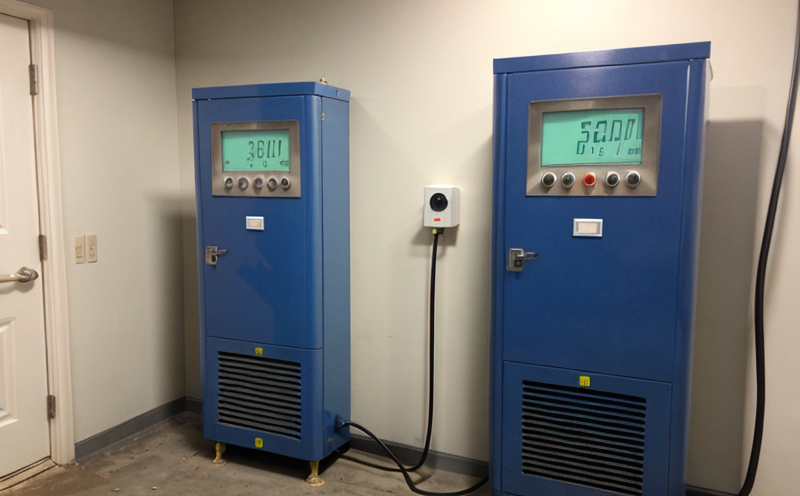BS EN 50291 Carbon Monoxide Detection Equipment Testing
The British Standard (BS) and European Norm (EN) standard, BS EN 50291, specifies the performance requirements for carbon monoxide (CO) detection equipment used in various industrial environments, particularly in mining. This testing ensures that CO detection devices meet stringent quality and safety standards to protect workers from potentially fatal exposure to high levels of this toxic gas.
The standard is applicable to all types of CO detection equipment including portable monitors, fixed detectors, and alarm systems employed in hazardous areas where the presence of carbon monoxide can be a serious occupational hazard. The testing covers multiple aspects such as sensor performance, alarm functionality, response time, accuracy, and interference resistance.
For mining operations, where ventilation issues are common due to underground working conditions, compliance with BS EN 50291 is crucial for ensuring that CO detection equipment can effectively monitor the air quality in confined spaces. This standardization helps prevent incidents such as explosions caused by CO buildup or exposure leading to poisoning.
The testing process involves exposing the detection device to a series of test gases and measuring its response against predefined thresholds outlined in the standard. Specific tests include checking for false alarms, ensuring proper calibration under different environmental conditions, verifying the alarm set-point accuracy, and evaluating how well the device handles background interferences like other toxic gases or particulates.
Accurate testing is critical because even small errors can have significant consequences in a hazardous environment. By adhering strictly to BS EN 50291 specifications during manufacturing and maintenance phases, miners can rest assured that their CO detection systems are reliable and capable of providing timely alerts when necessary. This not only enhances operational efficiency but also contributes significantly towards maintaining a safe working atmosphere for employees.
Compliance with this standard is mandatory in many countries around the world where mining activities occur. It ensures uniformity across different regions and industries, making it easier to compare results between various sites and technologies used globally. Furthermore, compliance helps businesses avoid legal penalties associated with non-compliant equipment while fostering trust among stakeholders who rely on accurate readings from these devices.
In summary, BS EN 50291 provides a robust framework for assessing the performance of CO detection equipment essential in mining environments. By rigorously testing such instruments according to this standard, organizations can ensure their safety measures are up-to-date and effective against potential risks posed by carbon monoxide exposure.
Why It Matters
The importance of accurate CO detection cannot be overstated in the mining sector. Carbon Monoxide (CO) is a colorless, odorless gas that poses significant dangers to human health and safety when present at elevated levels within enclosed spaces like underground mines.
- Health Risks: Exposure to CO can lead to severe health issues including headaches, dizziness, nausea, confusion, shortness of breath, and even death. The severity depends on the concentration level and duration of exposure.
Inadequate monitoring or malfunctioning equipment increases these risks exponentially, making it imperative that all detection devices used in mining operations comply with international standards like BS EN 50291.
- Regulatory Compliance: Failure to meet regulatory requirements could result in fines, penalties, and reputational damage for companies involved in non-compliance. Adhering to these standards demonstrates a commitment to worker safety and environmental stewardship.
Mining sites are inherently high-risk environments due to their confined nature and the variety of hazards they present. Properly functioning CO detection equipment acts as an early warning system, giving operators valuable time to implement corrective actions before any serious incidents occur.
- Operational Efficiency: Reliable monitoring contributes directly to improved productivity by minimizing downtime caused by uncontrolled gas leaks or other emergencies resulting from undetected CO levels. Regular maintenance checks and rigorous testing according to BS EN 50291 help maintain optimal performance of these critical systems.
Ultimately, ensuring compliance with this standard is not just about meeting legal requirements; it's an investment in safeguarding lives and enhancing overall operational excellence within the mining industry.
Benefits
- Improved Safety: Accurate CO detection ensures timely alerts, allowing for prompt evacuation of affected areas if necessary. This reduces the risk of health impacts from prolonged exposure to hazardous levels.
- Compliance Assurance: Meeting the requirements of BS EN 50291 helps avoid potential legal issues and enhances a company's reputation by demonstrating adherence to recognized best practices in safety management.
- Increased Productivity: Reliable CO detection systems contribute towards maintaining continuous operations without unnecessary interruptions due to equipment failures or false alarms.
- Precise Data: The standard provides consistent and repeatable measurement methods, ensuring that all readings are comparable across different devices and locations. This consistency supports robust decision-making processes based on accurate data.
In addition to these tangible advantages, there are also intangible benefits such as enhanced confidence among employees knowing they work in a safer environment supported by reliable monitoring technology. Such trust fosters better working relationships between management and staff, leading to improved morale and job satisfaction.
Why Choose This Test
- Accurate Results: Rigorous testing according to BS EN 50291 guarantees that CO detection equipment performs reliably under various conditions, providing trustworthy data crucial for effective decision-making.
- International Recognition: Compliance with this standard is widely accepted across different countries and industries, ensuring interoperability between devices from diverse manufacturers.
- Cost-Effective Solutions: Investing in tested equipment upfront saves costs associated with potential accidents or prolonged down time caused by substandard products later on. Regular testing also helps identify issues early preventing costly repairs or replacements.
- Detailed Reporting: Comprehensive reports generated during the test process offer detailed insights into the performance characteristics of each device, aiding informed procurement decisions and supporting continuous improvement initiatives.
The commitment to excellence demonstrated through rigorous testing according to BS EN 50291 sets a benchmark for quality assurance in CO detection equipment. Organizations choosing this service not only uphold high standards but also contribute towards creating safer working conditions for all involved parties.





